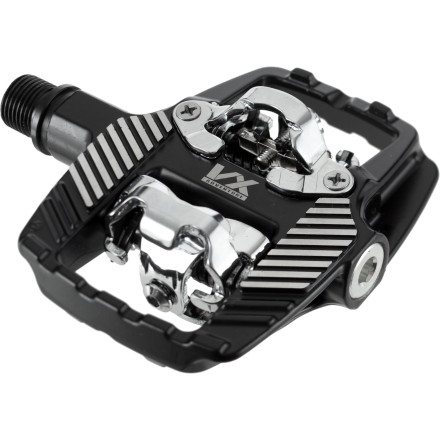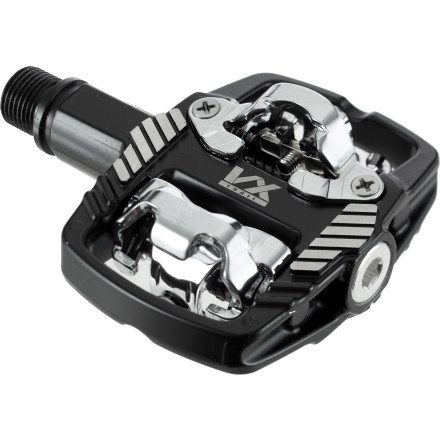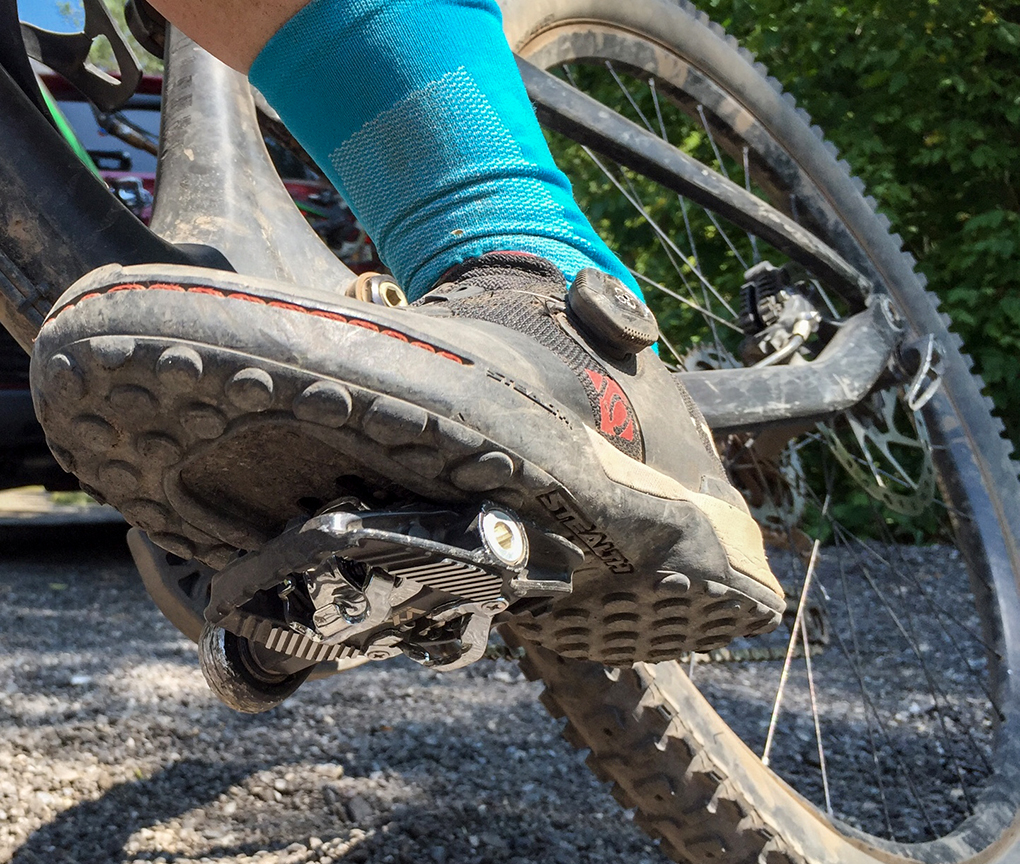
VX Adventure
- Body: coated aluminum
- Axle: CNC machined chromoly steel
- Bearing: Roller and double sealed ball bearings
- Binring: dual-sided, adjustable tension
- Cleat: VP-C01
Size: 90×90 mm
Claimed Weight: 472 g/pair
MSRP: $80 ($130 for the “Race” version which is lighter weight and uses higher quality bearings and seals)

VX Trail
- Body: coated aluminum
- Axle: CNC machined chromoly steel
- Bearing: Roller and double sealed ball bearings
- Binring: dual-sided, adjustable tension
- Cleat: VP-C01 (SPD compatible)
Size: 83.5×75.5 mm
Claimed Weight: 410 g/pair
MSRP: $75 ($110 for the “Race” version which is lighter weight and uses higher quality bearings and seals)
Shoes: Five Ten Kestrels
Reviewer: 5’2” 125 lbs
Bike: Scott Genius
Days tested: 3 weeks of the VX Trail, 3 months on the VX Adventure
Test Locations: Park City, UT; Salida, Crested Butte, and Colorado Springs, CO
Intro
VP Components is a Taiwanese company that manufactures pedals, headsets, and bottom brackets. For years they primarily dealt in OEM components, but branched out into higher-end aftermarket components, opening a U.S. office about five years ago.
In 2014 VP Components released their VX Pedal Series of SPD-compatible pedals, gunning for some of Shimano’s market share. The line includes the VX (cageless), VX Trail, and VX Adventure pedals, along with higher quality “Race” versions of each.

I tested VP’s VX Trail and VX Adventure pedals to see how the VP pedals compare to Shimano’s more expensive offerings. The VX Trail is geared toward more aggressive XC riding while the Adventure is aimed at all-mountain riding.
I’ve run Shimano SPD pedals for a couple years (after switching from Crankbrothers). Many of the VP options are more affordable than Shimano and I wanted to compare the performance and and durability of the two brands.
Cleat and Pedal Interface
All VP VX pedals are SPD cleat-compatible. I rode with both the SH-51 (the standard lateral release only) SPD cleat and the proprietary VP cleats. Both work great with the pedals. I like my pedals to be tight enough to make a noticeable “click” when engaging and to not risk unintentionally releasing. But, they should be easy enough to click in and out without too much effort while riding.
I felt like the VP cleats required a slightly tighter pedal spring tension setting than the SPDs in order to obtain the same feel and they wore down a bit faster. After just a few weeks riding the VP cleats I needed to tighten the spring tension.

The SPD and VP cleats feel very similar while riding. I have ridden primarily Shimano pedals and cleats for the past few years and found that the two companies’ cleat/binding interfaces are very comparable in terms of float (both claim 4 degrees which feels about accurate), resistance unclipping, and play between the cleat and pedal. The VP Components interface makes a slightly less audible “click” upon engaging, but it feels just as secure. They also have a slightly more abrupt build-up of resistance at the end of the float range.
NEXT: Overall Performance, My Pick, Etc.
